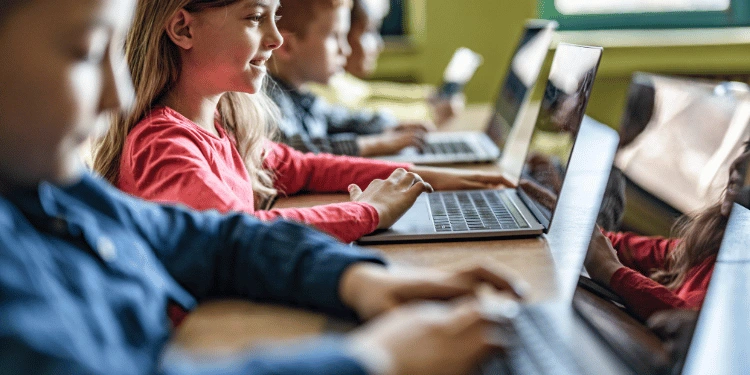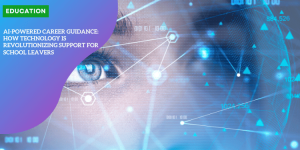Device Donations Bridging the Digital Divide in Australian Schools by 2025
As students across Australia return to classrooms in 2025, a concerning statistic has emerged: 1.16 million young people, or 19% of the student population, lack access to a laptop or desktop computer at home.
This includes 400,000 high school students, many of whom face significant barriers to completing their education due to insufficient access to technology.
With many schools implementing mandatory ‘bring your own device’ (BYOD) policies, the digital divide is becoming a critical issue.
Research shows that students with access to technology are more likely to complete Year 12 and transition successfully into the workforce.
To address this challenge, initiatives like the National Device Bank, supported by Deloitte, WorkVentures, and The Smith Family, are stepping up to provide much-needed resources to disadvantaged students.
The Growing Digital Divide in Education
The digital divide remains a significant barrier to educational equity in Australia.
For students without access to devices like laptops or desktops, keeping up with schoolwork and meeting BYOD requirements can be nearly impossible.
This lack of access not only hinders academic performance but also limits future opportunities, as digital literacy is increasingly essential for success in both education and the workforce.
A recent report highlights the importance of digital inclusion, noting that students who engage in positive homework behaviors are more likely to complete Year 12 and secure employment.
However, for the 1.16 million young people without access to essential technology, these opportunities remain out of reach.
The National Device Bank: A Sustainable Solution
To tackle this issue, Deloitte, in partnership with not-for-profit organizations WorkVentures and The Smith Family, has donated 2,000 devices to the National Device Bank.
This initiative aims to provide refurbished devices to students in need, ensuring they have the tools required to succeed in their education.
Caroline McDaid, CEO of WorkVentures, emphasized the importance of scaling device donations to address the growing digital inequity.
“With 1.2 million young people experiencing digital gaps, scaling donations is essential,” McDaid told The Educator.
“Our National Device Bank aims to secure multi-year commitments from companies and governments, targeting one million donation pledges from the 10 million devices refreshed every five years.”
This approach not only addresses the immediate need for devices but also provides a sustainable alternative to e-waste or overseas remarketing.
By refurbishing and redistributing devices, the National Device Bank ensures that technology reaches those who need it most.
Impact Measurement and Success Stories
The success of the National Device Bank is evident in its measurable impact on students’ academic performance and digital engagement.
A 2024 WorkVentures project revealed that 84% of students lacking adequate device access were falling behind in their studies.
However, after receiving devices through the program, 97% reported using them for schoolwork, and eight in ten students experienced an improvement in their grades.
McDaid highlighted the importance of robust impact measurement, which includes quantitative surveys, qualitative case studies, and feedback from educators and independent evaluators.
“Ongoing monitoring and data-driven adjustments ensure that the Device Bank effectively supports student success,” she said.
Expanding Access to Connectivity and Digital Literacy
The National Device Bank is more than just a source of refurbished devices; it is a comprehensive platform designed to address all aspects of digital inclusion.
In partnership with initiatives like the School Student Broadband Initiative and free telco mobile data programs, the Device Bank ensures that eligible families have access to reliable internet connectivity.
Each refurbished device comes with phone and chat technical support, as well as age-appropriate e-safety and digital content.
Additionally, WorkVentures collaborates with its network of 6,000 not-for-profit organizations to deliver tailored digital literacy programs and workshops.
“We are exploring ways to expand this content and make it available through the National Device Bank,” McDaid said. “Our goal is to provide a one-stop digital platform where students can access devices, connectivity, and the skills they need to thrive in a digital world.”
A Collaborative Approach to Digital Inclusion
The success of the National Device Bank relies on collaboration between businesses, governments, and not-for-profit organizations.
By drawing on successful models from Canada and the UK, WorkVentures has created a scalable and impactful solution to Australia’s digital divide.
Deloitte’s contribution of 2,000 devices is just the beginning.
The National Device Bank aims to secure long-term commitments from corporations and policymakers to ensure a steady supply of refurbished devices for students in need.

The Role of Schools and Educators
Schools and educators play a crucial role in identifying students who lack access to technology and connecting them with resources like the National Device Bank.
By working closely with not-for-profit organizations, schools can ensure that students receive the support they need to succeed academically and develop essential digital skills.
Teachers also have the opportunity to integrate digital literacy into their curricula, helping students build confidence and competence in using technology.
This holistic approach not only addresses immediate needs but also prepares students for future success in a digitally driven world.
Looking Ahead: A Vision for Digital Equity
As the National Device Bank continues to grow, its impact on Australian education will become increasingly significant.
By providing access to devices, connectivity, and digital literacy programs, the initiative is helping to level the playing field for disadvantaged students.
McDaid envisions a future where every student has the tools and skills they need to succeed. “Our goal is to create a sustainable, scalable solution that addresses the root causes of digital inequity,” she said.
“By working together, we can ensure that no student is left behind.”
Conclusion: Bridging the Gap for a Brighter Future
The digital divide remains a pressing challenge for Australian education, but initiatives like the National Device Bank are making a tangible difference.
By providing refurbished devices, internet access, and digital literacy programs, this collaborative effort is helping to bridge the gap and create equal opportunities for all students.
As schools, businesses, and not-for-profits continue to work together, the vision of a digitally inclusive education system is within reach.
For students across Australia, this means a brighter future filled with possibilities.







